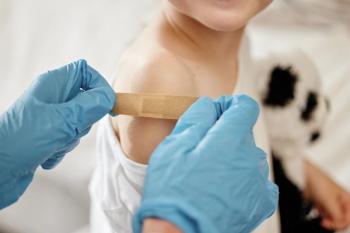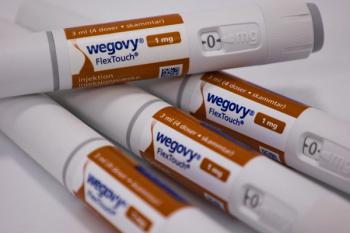
- January 2023
- Volume 89
- Issue 1
January OTC Case Studies- Diabetes
Cases address questions about glycated hemoglobin A1C and hypoglycemia management.
Case 1: Point-of-care Hemoglobin A1c
Q: MC is a 43-year-old man who has hypertension and recently received a diagnosis of type 2 diabetes with a glycated hemoglobin A1C(HbA1C) level of 7.4%, obtained 4 months ago. During his pharmacy visit to pick up a prescription refill for metformin, he shares that he recently lost weight after making changes to his diet and exercise regimen. MC has Been checking his blood glucose periodically but wants to know if his overall diabetes management has improved. His next doctor’s appointment is a year away. MC asks the pharmacist for recommendations on how to measure HbA1C to assess his diabetes control.
A: Because MC’s last HbA1C test was taken 4 months ago, he would be a candidate for a repeat test to measure his average blood glucose over the past 3 months. Point-of-care devices, such as A1CNow+, Everlywell HbA1c Test, ReliOn A1C Self Test System, Verisana HbA1c Test, or any store brand test, can be purchased over the counter to allow patients to measure their HbA1C level at home using a blood sample from a fingerstick.1 Given MC’s age and otherwise healthy status, his HbA1C goal would be less than 7%, indicating an estimated average blood glucose of less than 154 mg/dL.2
Case 2: Glucose Tablets
Q: JS is a 66-year-old woman with diabetes who recently started takin insulin. During the pharmacist counseling session for the new prescription, she says that her doctor educated her about the signs and symptoms of low blood sugar, including dizziness, hunger, an increased heart rate, irritability, shakiness, and sweating. JS also brings a bottle of glucose tablets and asks how to use the product to manage hypoglycemic episodes. How should the pharmacist counsel JS regarding optimal management of hypoglycemia?
A: Approximately 15 to 20 grams is the preferred treatment for consciousindividuals with a blood sugar level of less than 70 mg/dL, according to the American Diabetes Association.1 Glucose tablets may be purchased over the counter, although any form of fast-acting carbohydrate may be used, including 4 ounces of juice, 4 ounces of regular soda, 8 ounces of skim milk, or 5 to 6 pieces of hard candy.2 Most glucose tablets deliver 4 grams of carbohydrate per tablet. However, patients should always double-check the dose listed on the package label. In the event of a hypoglycemic episode, the patient should consume 4 glucose tablets and recheck blood sugar 15 minutes after treatment. If the blood sugar level remains low, treatment should be repeated. Once the blood glucose level rises, the patient should consume a meal or snack to prevent recurrence of hypoglycemia.1
Case 3: Weight Loss
Q: MK is a 39-year-old woman with a body mass index (BMI) of 42 kg/m2, hypertension, and type 2 diabetes. She is taking ertugliflozin (Steglatro) and losartan potassium (Cozaar). MK’s most recent glycated hemoglobin A1C level was 8.2%. An endocrinologist prescribed a new prescription, tirzepatide (Mounjaro), for diabetes. MK is interested in weight loss and would like to know if there are OTC supplements she can try. What recommendations should the pharmacist give MK?
A: Orlistat (Alli) is an FDA-approved, nonprescription weight loss aid that reduces the absorption of dietary fats. It is in indicated for obesity management in adults when used in conjunction with a low-fat, reduced calorie diet. It may be used in individuals who are overweight, with an initial body mass index (BMI) of greater than 30 kg/m2 or a BMI of 27 kg/m2 or greater in the presence of other risk factors, such as diabetes, dyslipidemia, and hypertension.1
Tirzepatide, a glucose-dependent insulinotropic polypeptide and glucagon-like peptide-1 receptor agonist, is FDA approved for type 2 diabetes.2,3 Tirzepatide also has favorable data regarding weight loss. The SURMOUNT-1 trial (NCT04184622) was a controlled, double-blind, phase 3, randomized trial that evaluated tirzepatide in adults with obesity. After 72 weeks, investigators found that tirzepatide provided substantial and sustained reductions in body weight compared with the placebo.4
Although MK would be eligible for OTC orlistat, she may benefit from trying tirzepatide first and then being evaluated by a health care professional before adding a second agent.
Case 4: SGLT2 Inhibitors in Heart Failure
Q: BR is a 70-year-old man with heart failure (HF). He is at the pharmacy to pick up refills for furosemide, metoprolol succinate, sacubitril/valsartan, and spironolactone. BR is also picking up a new prescription for dapagliflozin (Farxiga). He is concerned about the HF and wants to know if any OTC medications are available to prevent an exacerbation. BR also asks why he is being prescribed dapagliflozin for HF when his wife takes it for diabetes and he has no history of the disease. What should the pharmacist tell him?
A: There are no OTC medications approved to prevent HF exacerbations. BR’s new prescription for dapagliflozin, however, can help optimize HF management. Dapagliflozin, a sodium-glucose cotransporter 2 (SGLT2) inhibitor, was originally FDA approved for the treatment of type 2 diabetes and now has an expanded indication for HF. The results of recent studies have demonstrated cardiovascular benefits of this agent.
The DAPA-HF clinical trial (NCT03036124) compared dapagliflozin with a placebo in patients with New York Heart Association class II to IV HF with reduced ejection fraction. The primary composite outcome of worsening HF or cardiovascular death occurred in 16.3% of patients in the dapagliflozin group and 21.2% of patients in the placebo group (HR, 0.74; 95% CI, 0.65-0.85; P < .001).1 The DELIVER clinical trial (NCT03619213) investigated dapagliflozin in the setting of HF with mildly reduced or preserved ejection fraction. Dapagliflozin demonstrated a reduction in the composite primary outcome, cardiovascular death, or worsening heart failure compared with the placebo.2 Positive study results led to the expanded indication for dapagliflozin. New guidelines recommend SGLT2 inhibitors, such as dapagliflozin, as part of guideline-directed therapy in the setting of HF.3
References
- McMurray JJV, Solomon SD, Inzucchi SE, et al; DAPA-HF Trial Committees and Investigators. Dapagliflozin in patients with heart failure and reduced ejection fraction. N Engl J Med. 2019;381(21):1995-2008. doi:10.1056/NEJMoa1911303
- Solomon SD, Vaduganathan M, Claggett BL, et al. Baseline characteristics of patients with HF with mildly reduced and preserved ejection fraction: DELIVER trial. JACC Heart Fail. 2022;10(3):184-197. doi:10.1016/j.jchf.2021.11.006
- Heidenreich PA, Bozkurt B, Aguilar D, et al. 2022 AHA/ACC/HFSA Guideline for the Management of Heart Failure: a report of the American College of Cardiology/American Heart Association Joint Committee on Clinical Practice Guidelines. Circulation. 2022;145(18):e895-e1032. doi:10.1161/CIR.0000000000001063
About the Authors
Nicole Rudawsky, PharmD, BCPS, is a clinical assistant professor of pharmacy practice and administration at the Ernest Mario School of Pharmacy at Rutgers, The State University of New Jersey in Piscataway.
Rupal Mansukhani, PharmD, FAPHA, CTTS, is a clinical associate professor of pharmacy practice and administration at the Ernest Mario School of Pharmacy at Rutgers, The State University of New Jersey in Piscataway and a transitions-of-care clinical pharmacist at Morristown Medical Center.
Articles in this issue
almost 3 years ago
Pet Peeves- January 2023almost 3 years ago
Vivjoa From Mycovia Pharmaceuticals, Incalmost 3 years ago
Case Studies- January 2023almost 3 years ago
Consider 2 Safety Issues When Treating, Vaccinating for Monkeypoxalmost 3 years ago
FDA Allows Access to Lifesaving Investigational Drugsalmost 3 years ago
Generic Product News for January 2023almost 3 years ago
PREP Act Provides Opportunities for Advanced Rolesalmost 3 years ago
What Is the Point of Point-of-Care Testing?almost 3 years ago
January 2023 Rx Product Newsalmost 3 years ago
Pharmacists Play Key Role in Encouraging COVID-19 Booster UptakeNewsletter
Stay informed on drug updates, treatment guidelines, and pharmacy practice trends—subscribe to Pharmacy Times for weekly clinical insights.














































































































































































































